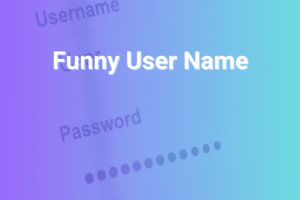The phrase “Big Brother is watching” has long been used to describe invasive surveillance. And in the age of remote work, it’s no surprise that employee tracking software sometimes gets unfairly lumped into that category. Images of hovering bosses watching every mouse click and keystroke often fuel fear and resistance among employees. But how accurate are these concerns?
The truth is, while there are unethical ways to use tracking tools, most modern employee tracking software is designed not to spy, but to support. Let’s break down the most common myths and set the record straight.
Myth 1: Tracking Software Is Just a Way to Micromanage
Reality: The goal isn’t control—it’s clarity.
Most employers don’t want to know every tab you open or how many bathroom breaks you take. They want to understand how time is being used at a team level so they can improve workflows, identify burnout, and ensure fair distribution of work.
Used properly, employee tracking software gives both managers and employees a big-picture view of productivity. It’s about smarter management, not obsessive oversight.
Myth 2: It’s Invasive and Violates Privacy
Reality: Ethical tracking respects boundaries.
Yes, some tools offer invasive features—but they aren’t the norm. Today’s leading platforms allow for customizable settings that focus only on work-related metrics during work hours. Employers can opt out of features like screen capture or keystroke logging in favor of less intrusive data, such as time spent on specific tasks or apps.
Plus, many companies make a point to involve employees in the process—clearly communicating what’s being tracked and why. Transparency is key.
Myth 3: It Lowers Morale and Destroys Trust
Reality: Trust is built through openness—not absence of tracking.
Secret surveillance will always damage morale. But when companies are upfront about using employee tracking software, and use it to offer support (not penalties), trust actually improves. Employees feel seen, not spied on, and often welcome the clarity that tracking brings to expectations and performance.
Many tools even allow individuals to view their own data—encouraging self-reflection, better time management, and a shared sense of accountability.
Myth 4: It’s Only for Catching Slackers
Reality: It’s more often used to improve processes—not people.
Of course, software can flag repeated inactivity or suspicious patterns, but its real strength lies in identifying trends across a team or department. Are meetings eating up too much time? Are certain tasks taking longer than expected? Are high-performers at risk of burnout?
This kind of insight helps companies streamline operations, improve collaboration, and support their people—not punish them.
Myth 5: It’s Only Useful for Remote Teams
Reality: Even in-office and hybrid teams benefit.
While employee tracking software gained popularity with the rise of remote work, it’s also helping hybrid and in-office teams stay aligned. Whether you’re managing field technicians, creative teams, or sales reps, tracking tools offer consistency, structure, and visibility—regardless of location.
Conclusion: It’s Not About Watching—It’s About Working Smarter
Like any tool, employee tracking software can be misused. But when companies lead with transparency, ethics, and intent, it becomes a powerful ally—not a threat. The best systems today are built not to monitor people, but to help them succeed.
So, is Big Brother watching? Not if your company is doing it right. The real purpose isn’t surveillance—it’s support, insight, and smarter work.
Quick FAQ
Q: Do employees have to give consent for tracking?
A: In many regions, yes. Legal and ethical best practices require informing employees about what’s being tracked and why.
Q: Can I see my own data?
A: Many platforms allow employees to access their personal activity dashboards, promoting transparency and self-improvement.
Q: What if I’m on a break or handling something personal?
A: Good tracking systems distinguish between idle time and active work, and ethical companies focus only on work-related metrics.










